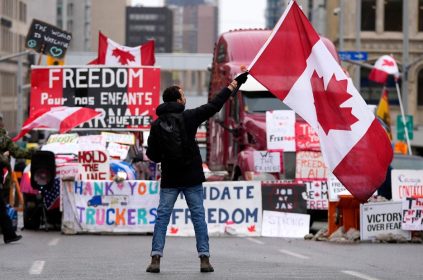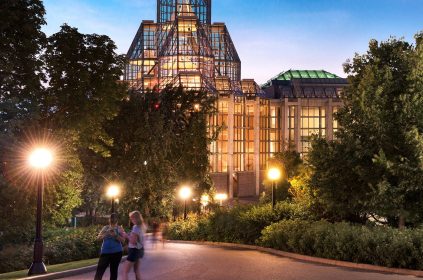OTTAWA — One year ago today, Canadians elected to put Prime Minister Justin Trudeau’s Liberals on a shorter leash, returning them to government but with only a minority of seats in the House of Commons.
It has been a year of unprecedented calamity and crisis.
So it seems somehow fitting that the anniversary will be marked by a confidence vote today in the Commons that will decide whether to plunge Canadians into another election in the midst of the worst global pandemic in a century.
Here’s a look back at the top five things the government has had to contend with in the first year of its second mandate:
— On Jan. 8, Ukraine International Airlines Flight PS752 was hit by two Iranian missiles shortly after takeoff from Tehran airport. Among the 176 people killed were 55 Canadian citizens and 30 permanent residents. Dozens more passengers were bound for Canada, many of them students and academics returning from a winter break.
Canada and the other members of the International Co-ordination and Response Group for the victims of Flight PS752 continue to press Iran to conduct a thorough, transparent investigation into the tragedy. They also want a criminal investigation and impartial judicial proceedings against those responsible and for compensation for victims’ families.
Some families of the victims have criticized the Trudeau government for not doing enough to stop Iranian stonewalling.
— In February, protests and railway blockades sprang up across the country in solidarity with hereditary chiefs from British Columbia’s Wet’suwet’en First Nation, who were contesting construction of a natural gas pipeline across their traditional territory in northern B.C. The blockades dragged on for weeks, prompting fear of economic devastation and calls for police to forcibly remove the barriers as the government attempted to find a peaceful resolution.
In early March, federal and provincial governments reached a deal with the hereditary chiefs on Wet’suwet’en rights and land title. That ended the blockades, although it did not resolve the underlying conflict over the Coastal GasLink pipeline project.
— In mid-March, the country went into lockdown as the deadly coronavirus that causes COVID-19 began sweeping the country. Canadians were told to stay home and avoid contact with others as much as possible. All but essential businesses were shut down and the economy went into a tailspin. Trudeau himself had to go into isolation for several weeks after his wife contracted the disease.
The government stepped in with hundreds of billions of dollars worth of hastily created relief programs to help Canadians stay afloat during the pandemic.
As the pandemic went into a bit of a lull over the summer, provinces began relaxing some of the public health restrictions. But the spread of the coronavirus has spiked again this fall and the country is now in the midst of a second wave that threatens to be even more deadly than the first, which killed more than 9,000 Canadians. Federal and provincial governments are struggling to contain it without forcing the country back into an economically devastating lockdown.
— On May 25, George Floyd died after Minneapolis police pinned him to the ground, one with a knee on his neck for nearly eight minutes while Floyd repeatedly pleaded that he couldn’t breathe. Floyd’s death sparked massive “Black Lives Matter” protests around the world, including in Canada, despite the pandemic.
Trudeau took a knee in one of those protests in Ottawa in June. But his government was also hit with allegations of police brutality and racism against Blacks, visible minorities and Indigenous people in Canada — some of them backed up with video evidence.
In one week in early June, an Indigenous woman was fatally shot by police in New Brunswick during what was supposed to be a “wellness” check and an RCMP officer was captured on video knocking down an Inuk man with the door a pickup truck in Nunavut. That was quickly followed by the disclosure of video from a violent altercation in March between RCMP officers and the chief of a northern Alberta First Nation, who had been stopped over an expired licence plate on his vehicle.
— On June 25, Trudeau announced the creation of the Canada Student Service Grant, which was to provide compensation to students who volunteered over the summer in pandemic-related efforts. The program was immediately engulfed in controversy over the fact that WE Charity, an organization with which Trudeau and his family members had long been involved, was given a $43.5-million contract to administer the program.
Within a week, WE backed out of the arrangement and the program itself was eventually cancelled. WE returned to the government all money it had been given to launch the program and says it has eaten some $5 million in expenses for which it will not seek reimbursement.
Trudeau has said that the recommendation to involve WE came from public servants but he has nevertheless apologized for not recusing himself from the final decision, given his family’s connections to the group.
WE has disclosed it paid Trudeau’s wife $1,500 for one speech and covered nearly $24,000 in expenses for eight other events over the past eight years. It has also paid his mother $180,000 in speaking fees and almost $164,000 in expenses over the years, and his brother $36,000 in fees and just over $22,000 in expenses.
Bill Morneau, finance minister at the time, also has close family ties to WE. Both he and Trudeau are under investigation by the federal ethics commissioner, which may have had something to do with Morneau’s abrupt decision in early August to resign from cabinet and from politics altogether.
Opposition attempts to revive their investigation into the WE affair this fall have been filibustered by Liberals at House of Commons committees, which has in turn led to an impasse over a Conservative motion to create a special committee to investigate alleged Liberal “corruption.” Today’s vote on that motion could bring down the government.
This report by The Canadian Press was first published Oct. 21, 2020.
The Canadian Press












